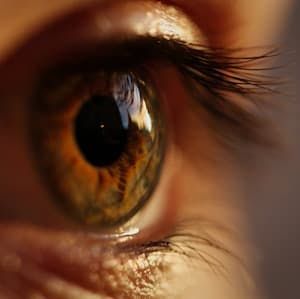Vitreous Hemorrhage After Anti-VEGF Treatment Linked to Worse Visual Outcomes
At 1-year follow-up, intravitreal aflibercept and brolucizumab reportedly improved vision in treatment-naïve patients with submacular hemorrhage secondary to AMD, unless vitreous hemorrhage developed.
Credit: Marc Schulte/Pexels

Intravitreal monotherapy treatment using aflibercept or brolucizumab reportedly improved vision without significant difference in treatment-naive eyes with submacular hemorrhage secondary to age-related macular degeneration (AMD) at 1-year follow-up, unless vitreous hemorrhage developed.1
The retrospective analysis indicated vitreous hemorrhages developed at an estimated incidence rate of 8.1% following the anti-vascular endothelial growth factor (anti-VEGF) treatment and worsened visual acuity, with investigators from Yokohama City University Medical Center noting risk factors for development included larger disc areas and younger age.
“The current report is the first to describe the functional outcomes of intravitreal brolucizumab in patients with treated-naive AMD with a submacular hemorrhage,” wrote Maiko Maruyama-Inoue and colleagues. “No significant difference was seen between intravitreal aflibercept and intravitreal brolucizumab in the visual outcomes after treatment.”
Recent data suggest brolucizumab provides better control of intraretinal, subretinal, and sub-retinal pigment epithelium (RPE) fluids than aflibercept. Maruyama-Inoue and colleagues noted the anticipation for greater data on the effectiveness of brolucizumab for submacular hemorrhages due to AMD in a real-world clinical setting. To determine 1-year visual outcomes, a total of 62 consecutive treatment-naive eyes of 62 patients with submacular hemorrhage secondary to nAMD treated with aflibercept or brolucizumab were retrospectively evaluated.
All patients were initially treated at Yokohama City University Medical Center between April 2013 – May 2021 and received three monthly intravitreal injections during the loading phase. Those treated with aflibercept had injections administered as needed in the maintenance phase, while those treated with brolucizumab received treatments every 12 weeks unless new fluid or a new hemorrhage developed. Investigators noted injections were discontinued and a vitrectomy was performed if vitreous hemorrhages developed after treatment.
Patients were divided into two groups depending on whether vitreous hemorrhages had or had not developed during the follow-up period. The main outcome measure for the analysis was the changes in best-corrected visual acuity (BCVA) in each group. Investigators performed multiple regression analyses to determine the correlations between various parameters including age, sex, type of anti-VEGF agents, development of vitreous hemorrhages after treatment, use of anticoagulants, AMD type, and the differences between the pre- and post-injection BCVA 12 months post-treatment.
Upon analysis, a vitreous hemorrhage developed in five eyes (8.1%) after treatments, while no vitreous hemorrhage developed in the remaining 57 eyes during the follow-up examinations. Investigators found no significant differences in patient characteristics between the two groups (P >.05 for all comparisons).
At baseline, the mean logarithm of the minimum angle of resolution (logMAR) visual acuity was 0.42 ± 0.36 in the group without vitreous hemorrhage and 0.45 ± 0.45 in the group with vitreous hemorrhage. Data showed the mean logMAR BCVAs at 12 months were 0.39 ± 0.48 in the group without vitreous hemorrhage and 0.92 ± 0.51 in the group with vitreous hemorrhage.
Additionally, in the group without vitreous hemorrhage, the post-injection BCVA improved significantly compared with preoperatively at 12 months (P = .040) but did not change significantly in the group positive for vitreous hemorrhage. In fact, the group showed a trend toward visual worsening during the follow-up period, according to investigators.
In multiple linear regression, vitreous hemorrhage development was the only factor that was associated significantly (P <.001) with a worse BCVA at 12 months. Moreover, larger DAs (odds ratio [OR], 1.972; 95% confidence interval [CI], 1.180 – 3.297; P = .010) and younger age (OR, 0.839; 95% CI, 0.706 – 0.997; P = .046) were associated significantly with the development of vitreous hemorrhage.
“The current study also showed that the development of vitreous hemorrhages resulted in worse visual acuity at 1 year,” investigators wrote. “Therefore, patients with large hemorrhages at baseline should be paid attention to a high likelihood of vitreous hemorrhage occurrence and the probability of requiring invasive treatment such as vitrectomy is higher in patients with vitreous hemorrhage.”
References
- Maruyama-Inoue, M., Kitajima, Y., Yanagi, Y. et al. Intravitreal anti-vascular endothelial growth factor monotherapy in age-related macular degeneration with submacular hemorrhage. Sci Rep 13, 5688 (2023). https://doi.org/10.1038/s41598-023-32874-0